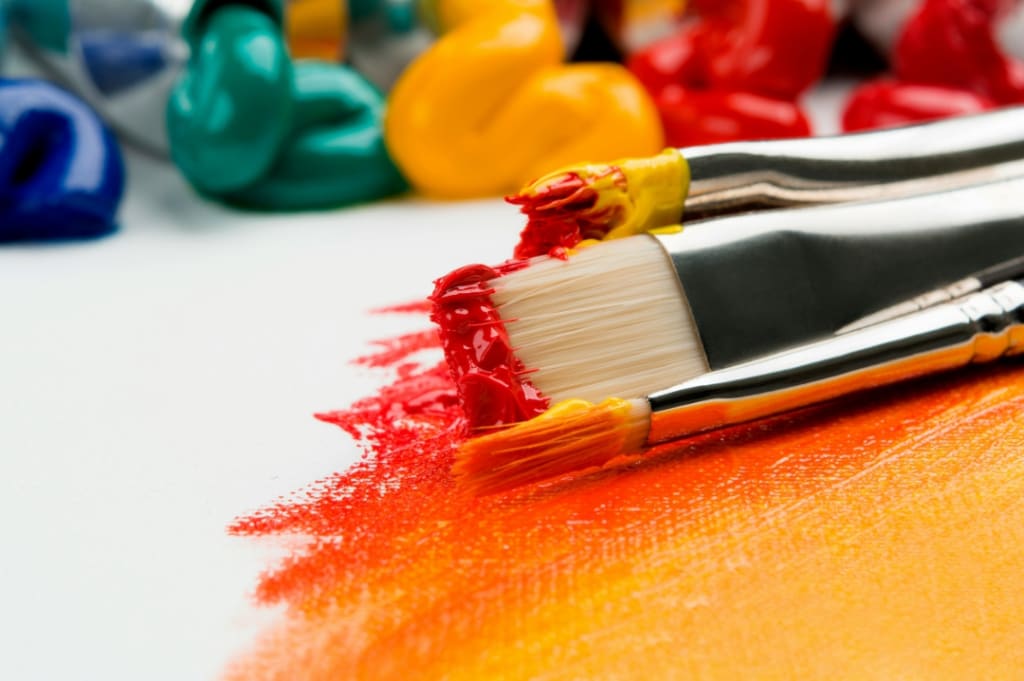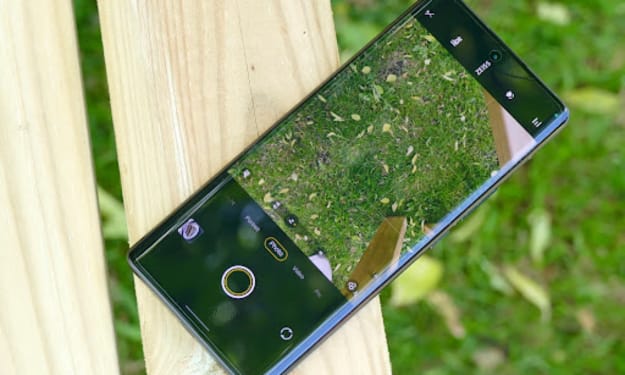Exploring the Influence of Art Movements on Modern Design
Unveiling the Artistic Roots: How Historical Art Movements Shape Modern Design

Art movements have long played a pivotal role in shaping the aesthetics and philosophies of design across various mediums. From architecture and fashion to graphic and industrial design, the legacy of these artistic revolutions is evident in the modern visual landscape. Understanding the influence of art movements on modern design requires a deep dive into historical contexts, stylistic elements, and the transformative impact on contemporary practices.
The Renaissance: Rebirth of Classical Ideals
The Renaissance, spanning the 14th to the 17th centuries, marked a revival of classical Greek and Roman art and architecture. This period emphasized symmetry, proportion, and the human form, principles that continue to influence modern design. The Renaissance's focus on balance and harmony can be seen in contemporary architecture and interior design, where clean lines and proportional spaces create aesthetically pleasing environments.
Key Characteristics
- Symmetry and Proportion: Inspired by classical antiquity, Renaissance artists and architects like Leonardo da Vinci and Filippo Brunelleschi employed mathematical ratios to achieve harmonious proportions.
- Perspective: The development of linear perspective by artists such as Brunelleschi and Masaccio introduced a three-dimensional illusion on a flat surface, a technique that remains fundamental in modern visual design.
Modern Applications
- Architecture: The use of symmetrical facades and balanced proportions in buildings, from residential homes to public institutions, echoes Renaissance principles.
- Graphic Design: Modern graphic design employs grid systems and the golden ratio to create balanced and visually appealing compositions.
Baroque: Drama and Movement
Emerging in the late 16th century, the Baroque movement is characterized by its dramatic use of light and shadow, dynamic compositions, and emotional intensity. Baroque art and architecture sought to evoke a sense of awe and grandeur, influencing modern design's approach to theatricality and expressiveness.
Key Characteristics
- Chiaroscuro: The dramatic contrast between light and dark, popularized by artists like Caravaggio, creates a sense of depth and volume.
- Movement and Emotion: Baroque compositions are often dynamic and filled with movement, capturing moments of high drama and emotion.
Modern Applications
- Interior Design: Modern interiors that incorporate dramatic lighting and rich, textured materials reflect Baroque influences.
- Advertising: The use of high-contrast imagery and emotionally charged visuals in advertising campaigns draws from Baroque principles to captivate audiences.
Rococo: Elegance and Playfulness
The Rococo movement, which emerged in the early 18th century, is known for its ornate detail, pastel colors, and playful themes. It represents a shift from the grandeur of Baroque to a more intimate and decorative aesthetic, influencing modern design's approach to luxury and decoration.
Key Characteristics
- Ornamentation: Intricate details and elaborate decorations define Rococo art and architecture.
- Soft Colors: Pastel hues and light, airy compositions create a sense of elegance and refinement.
Modern Applications
- Fashion Design: The use of intricate embroidery and soft, flowing fabrics in fashion echoes Rococo's emphasis on ornamentation and elegance.
- Product Design: Luxury products, from high-end furniture to jewelry, often incorporate Rococo-inspired detailing and craftsmanship.
Neoclassicism: Return to Simplicity
In the late 18th century, Neoclassicism emerged as a reaction against the excesses of Rococo. Inspired by the simplicity and rationality of classical antiquity, Neoclassicism emphasized clean lines, minimal ornamentation, and a focus on form and function. This movement laid the groundwork for modern minimalist design.
Key Characteristics
- Simplicity and Restraint: Neoclassical design favors clean lines and minimal decoration.
- Form and Function: Emphasis on functional, practical design elements.
Modern Applications
- Architecture: The clean, unadorned lines of modern architecture and the use of classical elements such as columns and pediments reflect Neoclassical influences.
- Interior Design: Modern minimalist interiors, with their emphasis on simplicity and functionality, draw from Neoclassical principles.
Romanticism: Emotion and Individualism
The Romantic movement of the late 18th and early 19th centuries emphasized emotion, individualism, and the sublime beauty of nature. Romanticism's focus on personal expression and the power of nature continues to influence modern design's approach to creating emotive and immersive experiences.
Key Characteristics
- Emotion and Imagination: Romantic art and literature prioritize emotional expression and imaginative storytelling.
- Nature and the Sublime: Romanticism often explores the awe-inspiring beauty of the natural world.
Modern Applications
- Landscape Architecture: The design of parks and gardens that celebrate natural beauty and create immersive, emotive experiences reflects Romantic influences.
- User Experience Design: In digital design, creating emotionally engaging and immersive user experiences draws from Romantic principles.
Realism: Truth and Accuracy
In the mid-19th century, Realism emerged as a reaction against the idealism of Romanticism. Realist artists and writers sought to depict everyday life with truth and accuracy, emphasizing the ordinary and the mundane. This movement's focus on authenticity and the representation of real-world experiences influences modern design's approach to realism and verisimilitude.
Key Characteristics
- Truthfulness: Realist art and literature strive for accurate, unembellished depictions of life.
- Focus on the Everyday: Realism often portrays ordinary people and everyday scenes.
Modern Applications
- Photography: The documentary style of photography, which captures real-life moments with authenticity, is rooted in Realist principles.
- Product Design: Designing products that meet practical, everyday needs and are user-friendly reflects Realist influences.
Impressionism: Light and Perception
Impressionism, which emerged in the late 19th century, revolutionized art by focusing on the effects of light and color and capturing fleeting moments. Impressionist artists like Claude Monet and Pierre-Auguste Renoir sought to depict their immediate perceptions of the world, influencing modern design's approach to capturing the essence of a moment.
Key Characteristics
- Light and Color: Impressionist artists use loose brushwork and vibrant colors to capture the changing effects of light.
- Ephemeral Moments: Impressionism often depicts everyday scenes and fleeting moments.
Modern Applications
- Graphic Design: The use of light and color to create dynamic, visually engaging designs draws from Impressionist techniques.
- Fashion Design: Fabrics and garments that play with light and movement, creating an impression of fluidity and change, reflect Impressionist influences.
Art Nouveau: Organic Forms and Decorative Arts
At the turn of the 20th century, Art Nouveau emerged as a decorative arts movement that embraced organic forms, flowing lines, and intricate patterns. Art Nouveau sought to break down the barriers between fine and applied arts, influencing modern design's integration of art and functionality.
Key Characteristics
- Organic Forms: Inspired by nature, Art Nouveau features curvilinear lines and floral motifs.
- Integration of Art and Design: Art Nouveau artists and designers sought to create a total work of art (Gesamtkunstwerk) that unified various artistic disciplines.
Modern Applications
- Architecture: Buildings that incorporate organic forms and ornamental details, such as the works of Antoni Gaudí, reflect Art Nouveau influences.
- Graphic Design: The use of flowing lines and decorative elements in modern graphic design draws from Art Nouveau principles.
Modernism: Functionality and Abstraction
Modernism, which gained prominence in the early 20th century, represents a radical departure from traditional forms and a move towards abstraction and functionality. Modernist artists and designers like Pablo Picasso, Le Corbusier, and Walter Gropius emphasized simplicity, innovation, and the rejection of historical styles, shaping modern design's minimalist and functionalist approach.
Key Characteristics
- Abstraction and Simplicity: Modernist design favors abstract forms and simple, clean lines.
- Functionality and Innovation: Emphasis on practical, innovative design solutions.
Modern Applications
- Architecture: The minimalist, functionalist approach of modern architecture, with its emphasis on open spaces and unadorned surfaces, is rooted in Modernist principles.
- Industrial Design: The design of everyday objects that prioritize functionality and simplicity reflects Modernist influences.
Bauhaus: Unity of Art and Technology
The Bauhaus movement, founded in 1919 by Walter Gropius, sought to unify art, craft, and technology. The Bauhaus school emphasized the integration of artistic expression and industrial production, influencing modern design's approach to interdisciplinary collaboration and functional aesthetics.
Key Characteristics
- Form Follows Function: Bauhaus design prioritizes practical, functional solutions.
- Integration of Art and Technology: The movement promotes collaboration between artists, designers, and engineers.
Modern Applications
- Furniture Design: The sleek, functional designs of modern furniture, such as the iconic works of Marcel Breuer, reflect Bauhaus principles.
- Graphic Design: The use of geometric shapes, clean lines, and functional typography in modern graphic design draws from Bauhaus influences.
Art Deco: Glamour and Modernity
Art Deco, which flourished in the 1920s and 1930s, is characterized by its bold geometric shapes, luxurious materials, and glamorous aesthetic. Art Deco represents a fusion of modernity and elegance, influencing modern design's approach to creating visually striking and luxurious environments.
Key Characteristics
- Geometric Patterns: Art Deco features bold, symmetrical geometric patterns.
- Luxurious Materials: Use of high-end materials like marble, chrome, and glass.
Modern Applications
- Interior Design: The use of geometric patterns, luxurious finishes, and bold color schemes in modern interiors reflects Art Deco influences.
- Fashion Design: the glamour and sophistication of Art Deco are echoed in high fashion, with designs that feature intricate beadwork, metallic fabrics, and bold silhouettes.
Surrealism: Dreamscapes and the Unconscious
Surrealism, which emerged in the early 20th century, explores the realm of dreams and the unconscious mind. Surrealist artists like Salvador Dalí and René Magritte used unexpected juxtapositions and dreamlike imagery to challenge perceptions of reality. This movement's focus on the fantastical and the imaginative continues to influence modern design's approach to creativity and innovation.
Key Characteristics
- Dreamlike Imagery: Surrealist art features bizarre, fantastical scenes that defy logic.
- Unexpected Juxtapositions: Combining unrelated elements to create surprising, thought-provoking compositions.
Modern Applications
- Advertising: The use of surreal, imaginative imagery in advertising campaigns to capture attention and create memorable impressions reflects Surrealist principles.
- Interior Design: The incorporation of whimsical, unexpected elements in modern interiors draws from Surrealist influences, creating spaces that inspire creativity and imagination.
Postmodernism: Diversity and Pluralism
Postmodernism, which gained prominence in the late 20th century, is characterized by its rejection of modernist purity and embrace of diversity, pluralism, and eclecticism. Postmodern designers and architects like Michael Graves and Robert Venturi sought to challenge conventions and celebrate a multiplicity of styles, influencing modern design's embrace of eclecticism and cultural diversity.
Key Characteristics
- Eclecticism: Postmodern design combines elements from different styles and periods.
- Irony and Playfulness: Use of humor and playful references to challenge traditional norms.
Modern Applications
- Architecture: The playful, eclectic designs of postmodern architecture, with their mix of historical references and contemporary elements, reflect Postmodernist influences.
- Graphic Design: The use of diverse visual styles, bold typography, and playful imagery in modern graphic design draws from Postmodernist principles.
Conclusion: The Enduring Influence of Art Movements
The influence of art movements on modern design is profound and multifaceted. Each movement, from the Renaissance to Postmodernism, has contributed unique principles and aesthetic values that continue to shape contemporary design practices. By understanding the historical context and key characteristics of these movements, modern designers can draw inspiration from the past while pushing the boundaries of creativity and innovation.
Whether it's the symmetry and proportion of the Renaissance, the drama and movement of Baroque, or the eclecticism and pluralism of Postmodernism, the legacy of art movements lives on in the designs that shape our everyday lives. As we continue to navigate the evolving landscape of design, the enduring influence of these artistic revolutions reminds us of the timeless power of creativity and the endless possibilities of artistic expression.
About the Creator
BLESSING COOL
Digital Network Marketer || Crypto Enthusiat || Social Media Influncer || Skilled Serial Entrepreneur || Investor || Motivational Speaker || News Reporter.
Enjoyed the story? Support the Creator.
Subscribe for free to receive all their stories in your feed. You could also pledge your support or give them a one-off tip, letting them know you appreciate their work.






Comments
There are no comments for this story
Be the first to respond and start the conversation.